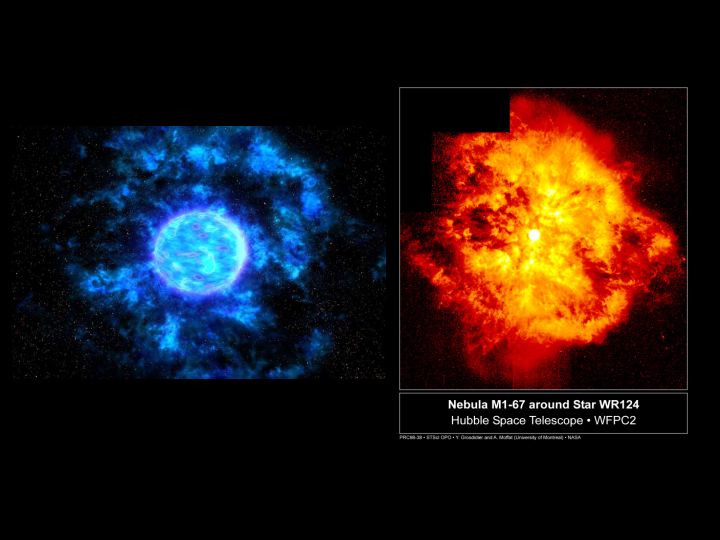
 Credit: left: NASA/Dana Berry/SkyWorks Digital; right: Y. Grosdidier (U. Montreal) et al., WFPC2, HST, NASA
Credit: left: NASA/Dana Berry/SkyWorks Digital; right: Y. Grosdidier (U. Montreal) et al., WFPC2, HST, NASA
Busy Month of Bursts
The study of the transient Universe can be hit or miss. This past March it was largely hit - 4 Gamma Ray bursts were discovered and localized by the High Energy Transient Explorer in a single week. Even more exciting, 3 of the bursts have associated optical transients, while 2 of the bursts have measured distances. These discoveries, along with a burst discovered in August 2002, strengthen the association between these terrible explosions and the deaths of extremely massive stars. The image on the above left shows an artist's impression of a Wolf-Rayet star, a hot blue star surrounded by a thick wind, just hours before the star explodes. On the right is an image of an actual WR star, WR 124, obtained by the Hubble Space Telescope. The HST image shows how clumpy the wind from a WR star can be, and how the WR star's wind helps shape its environment in the aeons before the star's death.
Last Week *
HEA Dictionary * Archive
* Search HEAPOW
* Education
Each week the HEASARC
brings you new, exciting and beautiful images from X-ray and Gamma ray
astronomy. Check back each week and be sure to check out the HEAPOW archive!
Page Author: Dr. Michael F. Corcoran
Last modified March 31, 2003


